While the FM frequency band (88 to 108 mHz) is mostly line of sight, there are things that cause long-distance reception hundreds or sometimes even thousands of miles from the transmitter. For a radio engineer, this can lead to all sorts of problems. Some are serious like STL cutouts, and some are quite funny, such as the general manager panicking when several new stations suddenly pop up in town. One of the many jobs of a broadcast engineer is to avoid problems and fix them if they show up (preferably the former).
The first and most common of these phenomena is Tropospheric ducting. This happens in warmer weather when there is a high-pressure system nearby and is more prevalent over flat terrain. What happens is a warmer layer forms in the atmosphere above a cool layer. That is why it is also known as “temperature inversion.” This causes a higher refractive index, which means that normally the signal would carry on out into space, however, upon encountering this warm layer it is bent back to Earth. It can last a few minutes to several hours. It affects all frequencies but is most prevalent above 100 mHz.
In some more severe cases, FM stations can travel 500 or more miles and override the local station’s transmitter site 15 miles away. In the age of digital STLs, co-channel, and adjacent channel interference can cause the STL receiver to unlock and mute. Analog STLs will become hissy or drop out altogether. It can be a big problem.
Unfortunately, not a lot can be done about main channel interference. It will go away eventually, and no, the station causing the interference is not operating illegally or any other thing. One consolation, if the duct is open in one direction, it is also open in the other, so say hello to all your new temporary listeners in East Podunk.
As far as STL paths go, the best defense is to have a good strong signal at the receive site. Boosting the signal with a preamp at the back of the STL receiver will not do anything. Larger, higher gain antennas at the transmit and receive will help, and more transmitter power will help. Sometimes diversity receiving antennas will help because at the 950 frequencies, 100 feet or so of altitude may make all the difference. Other than that, things like a backup RPU path using a lower frequency, a backup T-1, a backup ISDN line, a Comrex Matrix, basically anything to restore programming.
There is a tropospheric ducting prediction site called Worldwide Tropospheric Ducting Forecasts. They produce daily maps and predictions based on weather patterns.
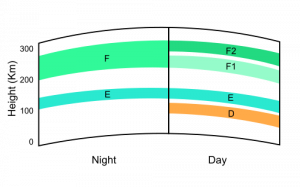
The next propagation type known to abnormally affect VHF frequencies is called Sporadic E or E skip. This happens went ionized particles appear in the E layer of the ionosphere and it is more prevalent during the high period of the sunspot cycle when the atmosphere is unsettled due to solar storms. It is more likely to affect frequencies below 125 mHz, so main channel interference may be noted, but STLs and other broadcast auxiliary services will not likely see any effects.
This can happen any time of the year in any terrain and in any weather condition although it seems to be more prevalent in summer and for some unknown reason, around Christmas.
Ionospheric propagation is also known as skywave and is responsible for long-distance communications in the MF (AM broadcast band) and HF (Shortwave broadcast band).
During sunlit periods, the Ionosphere breaks down into several layers; the D layer, which is responsible for the absorption of AM signals during the daytime. The E layer, which normally reflects signals less than 10 MHz. The F1 and F2 layers, which primarily affect HF and lower VHF, from 10 – 40 MHz or so.
During sporadic E events, the E layer becomes heavily ionized in specific small thin areas, sometimes called clouds. This can last a few minutes or up to several hours. The effect is normally more pronounced with lower frequencies.
In this internet age, there is, of course, a website that can predict or at least define sporadic E, DXMaps.com has maps similar to the tropospheric ducting maps above.
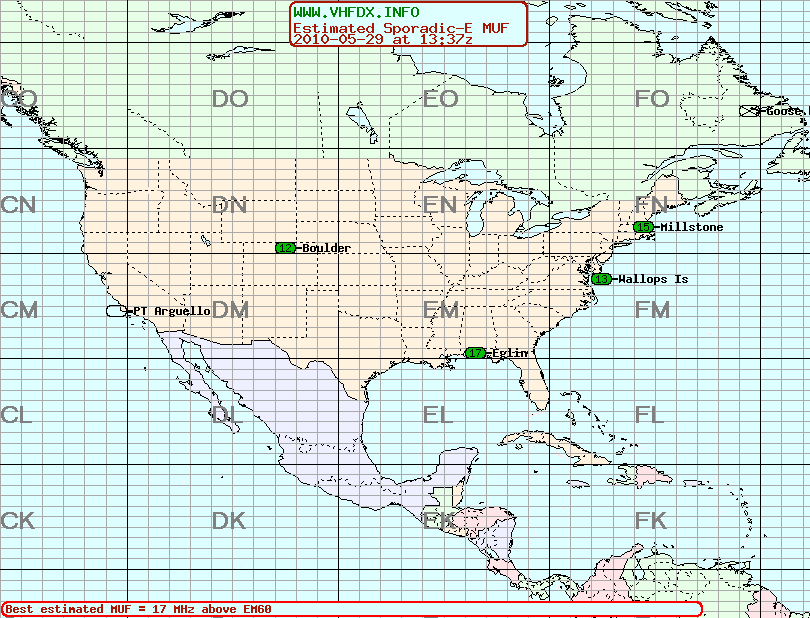
Occasionally, solar storms will affect communications on all frequencies. The last time I heard this was in the last sunspot peak around 2000 or so. I was listening to the radio and all the stations faded for several seconds. It turns out a huge solar flare had erupted and sent a stream of particles through the Earth’s atmosphere. I happened to be driving down the road and immediately my cell phone started ringing. Listening to the panicked program director on the other end, you’ve thought the earth has stopped spinning on its axis. Anyway, it does happen once in a while.

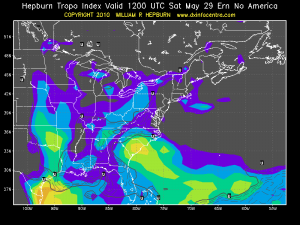



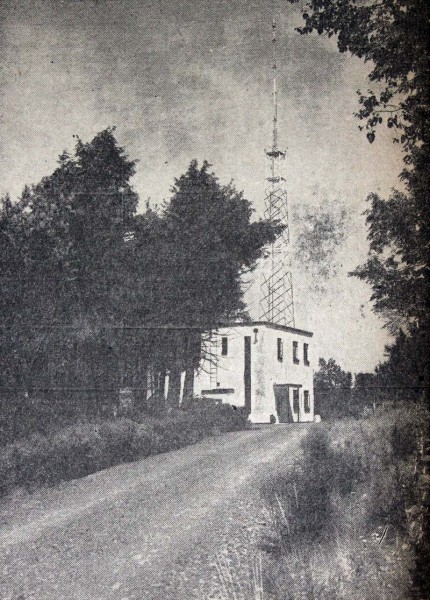
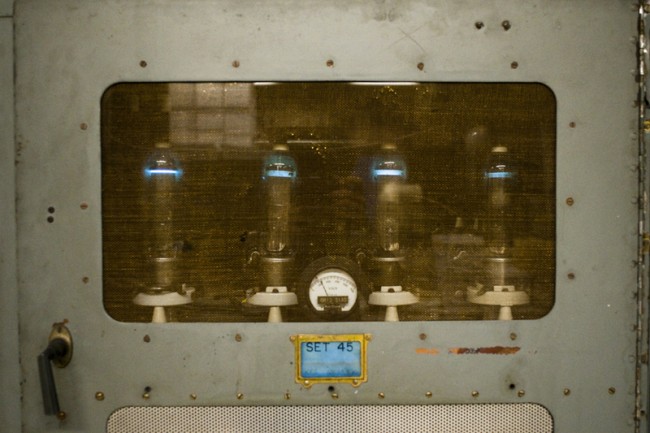
Operations near the Great Lakes produce almost unbearable interference during temperature inversions. The FCC has never taken on this problem and will not entertain it whatsoever. Stations in Michigan on FM or all TV bands suffer almost every summer, and now with DTV, the situation will be terribly worse. Analog UHF TV was forgiving, just an occasional ghosting or snowflake. But DTV must get all the data or it flunks. That is why I would have done a thorough analysis of propagation over or near lakes to insure the absolute least interference to the new DTV allocations. Even AT&T had problems with this ducting on analog microwave back in the early ’50’s. One of my sites was constructed in 1952 and put into service in August of 1953 to replace a site closer to Lake Michigan. Channel 3 in Milwaukee (later channel 4) had problems getting their NBC feed, and complained. AT&T re-engineered the path and built my Alden, IL site to replace the Spring Grove, IL site. In addition, another site had to be constructed to complete the path. Palmyra, Wisconsin was the other site built during the same time period in order to get away from the lake. Signal margins were also made brute force. This was expensive, but did the trick, and when Channel 3 moved to 4 with the 1000 foot tower, NBC programming was rock solid. Competent RF engineers know all about this phenomenon, but many of our digital “Computer Science” kids think only about fiber.
The worst case I’ve seen in a several years was in Gainesville where we had a 30 mile hop on 950 MHz. We did everything including adding a second hop. In the end, it cut out the same time every morning for a week during March and a week during September. Turns out we were suffering from sun fade. I happened to be in town and heard it one morning, the next I was at the transmitter site with a spectrum analyzer and watched the noise floor rise with the sun. At 8:00 AM exactly, the STL signal faded for about 15 minutes. We ended up with a T-1 line to this site and the 950 STL as a backup.
I guess I’ve been rehashing some things that were common sense even a few years ago, seems like black magic to kids these days. Wait until tube theory makes itself known.
Operations near the Great Lakes produce almost unbearable interference during temperature inversions. The FCC has never taken on this problem and will not entertain it whatsoever. Stations in Michigan, Illinois, Indiana, and Wisconsin on FM and TV bands suffer almost every summer, and now with DTV, the situation will be terribly worse. Analog TV was forgiving, just an occasional ghosting, flicker or snowflake, But DTV must get all of the data or it flunks with drop-outs or freeze frame. That is why I would have done a thorough analysis of propagation over or near lakes to insure the absolute least potential interference to the new DTV allocations. Even AT&T had problems with this ducting on 4 GHz. analog microwave back in the early ’50’s! One of my sites was constructed in 1952-53 and placed into service in August of 1953 to replace another site closer to Lake Michigan. Channel 3 in Milwaukee had problems with getting good NBC feeds during the periods of temperature inversions over the lake and complained. AT&T re-engineered the path from Chicago and built my Alden, IL site to replace Spring Grove, IL site. In addition, another site had to be constructed at Palmyra, Wisconsin to complete the path back to Milwaukee, by staying away from the lake. Signal margins were beefed up brute force and this although expensive, these new sites did the trick. Channel 3 moved to 4 with their new 1000 foot Ideco tower and the NBC programming was consistently rock solid. Competent RF engineers know all about this phenomenon, but many of our “Computer Science” digital kids think only fiber.
I’m glad you chose to continue with your radio work, and more specifically this blog. These last several articles have been great. It’s great to hear such information from somebody who has BTDT.
Thanks Gary, I decided that it would be fun to type out some of this information, somebody else might find it useful.
Just to echo Gary’s comments, as someone who is relatively new to the engineering side of radio, it’s not only fascinating to read your stories but there’s just so much useful information that you can’t find in books. I think that there is a certain personality type that gets attracted to the job, because I always find engineers to be so easy to get along with and very willing to pass on their knowledge with great passion and humour.
http://www.krud.com/toon64.html
Cheers
I like that krud.com site, some of those cartoons are very funny. Funny, yet true. Anyway, thanks Gary, I’ll keep typing…
Just came across this in July 2021. From a broadcast perspective I can see how this would be a nightmare, but from an amateur (ham) radio one tropo is something looked for as a major positive as it permits frequent 100’s and sometimes 1000’s of miles of DX; examples of the latter are California to Hawaii, UK to St Helena (and sometimes further), etc.
Last month there was an opening on FM (90.7) from near Quebec City to Scotland: the signal sounded local other than the fading! The guy thinks it was double (or more) hop sporadic-E but I’m not so sure. If it were tropo, it would likely be a new world record.